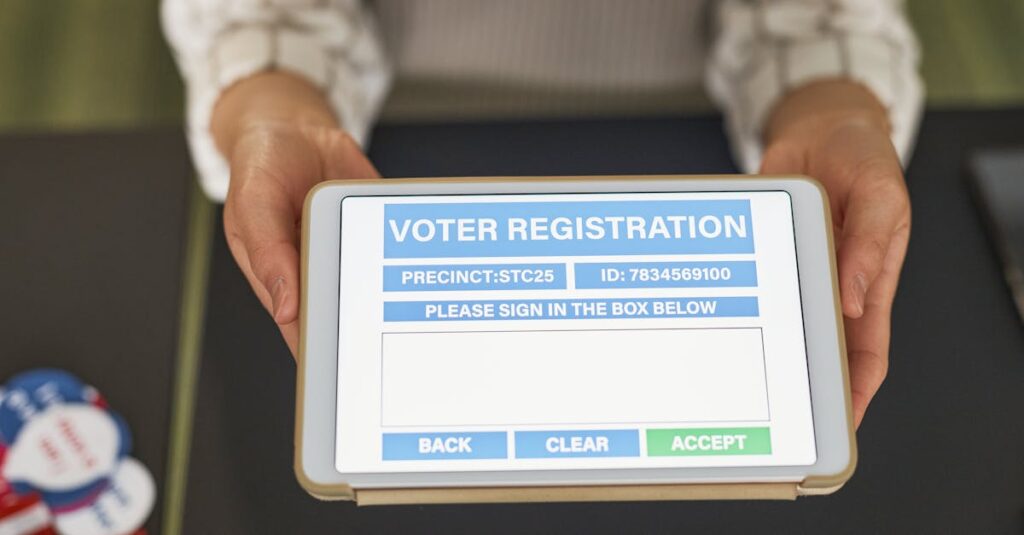Section 108. Voting through electronic means under the companies act 2013
The world of business is constantly evolving, and India is rapidly embracing digital transformation in its corporate procedures. Gone are the days when shareholder participation was strictly limited to physical presence at meetings. A significant step in this digital journey is Section 108 of the Companies Act, 2013, which introduced the concept of voting through electronic means. This provision marks a major shift in corporate governance, aiming to boost shareholder involvement, enhance transparency, and streamline the decision-making process within companies. Whether you are a small business owner looking to scale, an existing shareholder in a large corporation, or simply interested in modern corporate practices, understanding how voting through electronic means works is increasingly important. It empowers shareholders and brings company operations into the digital age.
Understanding Section 108: Voting Through Electronic Means
Section 108 of the Companies Act, 2013, fundamentally allows shareholders of specified companies to exercise their voting rights on resolutions through electronic methods, rather than solely relying on traditional show of hands or poll voting at physical general meetings. The primary legislative intent behind Section 108 electronic voting was multifaceted: to democratize corporate governance by enabling shareholders, regardless of their geographical location, to participate in crucial company decisions; to ensure greater fairness and accuracy in the voting process; and to modernize corporate procedures in line with global technological advancements. This section empowers the Central Government to prescribe specific classes of companies that must offer this facility and the precise manner in which voting through electronic means should be conducted, which is detailed further in associated rules. It signifies a commitment to leveraging technology for better corporate accountability and shareholder engagement.
For those interested in starting a business with strong governance practices, understanding the Documents Required for Incorporation of a Company can be beneficial.
What Constitutes “Electronic Means” for Voting?
When the law refers to electronic means for voting India, it’s not just any digital method. The Companies (Management and Administration) Rules, 2014, specifically Rule 20, define and regulate this. Essentially, “electronic voting system” means a secured computer-based process that records votes electronically, ensuring authenticity, confidentiality, and accuracy. It primarily encompasses two modes:
Remote E-Voting:
This facility allows shareholders to cast their vote electronically from anywhere – their home, office, or even while travelling – through a dedicated, secure online platform provided by an authorized agency. This voting window typically opens a few days before the scheduled general meeting and closes on the evening before the meeting date. This provides ample time and flexibility for shareholders to register their vote on proposed resolutions without needing to attend the meeting physically. It’s a crucial component for enabling widespread participation, especially for shareholders spread across different cities or countries.
E-Voting at the Meeting Venue:
Complementing remote e-voting, companies are also required to provide an electronic voting facility at the Annual General Meeting (AGM) or Extraordinary General Meeting (EGM) venue itself. This caters to shareholders who attend the meeting in person but prefer or are required (if they haven’t voted remotely) to use the electronic system. Typically, designated terminals or devices are set up at the venue, allowing shareholders to cast their votes electronically during the meeting, usually after the discussions on the resolutions are concluded but before the poll is formally closed. This ensures parity and provides a consistent voting method.
The backbone of this system involves secure technology platforms managed by agencies authorized by the Ministry of Corporate Affairs, such as the National Securities Depository Limited (NSDL) and Central Depository Services (India) Limited (CDSL) e-Voting platforms. These agencies ensure the integrity, security, and proper recording of votes cast through electronic means for voting India.
Applicability: Which Companies MUST Provide Electronic Voting?
The mandate for providing electronic voting companies act 2013 India facilities isn’t universal across all company types. The requirement primarily targets larger or publicly accountable entities to ensure broader shareholder democracy. According to Rule 20 of the Companies (Management and Administration) Rules, 2014, the following classes of companies must provide e-voting facilities to their members for all general meetings:
- Every company whose equity shares are listed on a recognized stock exchange. This covers all publicly traded companies, where shareholder participation is often widespread and geographically diverse.
- Every company having not less than one thousand (1,000) members. This applies even to unlisted public companies or potentially large private companies (though less common to reach this threshold) if they have a shareholder base of 1,000 or more individuals/entities.
It’s important to note that companies not falling under these mandatory categories can still choose to offer voting through electronic means voluntarily. Many progressive companies see the value in adopting e-voting to enhance shareholder convenience and improve governance standards, even if not legally required. For Small and Medium Enterprises (SMEs), understanding these rules is vital. If you own shares in listed companies, you’ll encounter e-voting. Furthermore, if your own business grows significantly, potentially crossing the 1,000-member threshold or aiming for a public listing, you will need to comply with these voting regulations companies act India. Awareness helps in planning for future compliance and governance needs.
For insights on the overall benefits of strong governance and regulatory compliance, check out Corporate Governance: Mandatory Committees and Their Functions.
For the latest official rules and notifications, you can refer to the Ministry of Corporate Affairs website: https://www.mca.gov.in/.
The Process of Voting Through Electronic Means: A Step-by-Step Guide
Engaging in voting through electronic means is a structured process designed to be secure and transparent, adhering strictly to the voting regulations companies act India. For a shareholder, the journey typically involves the following steps:
Step 1: Receiving the Notice
The process begins when the company sends out the Notice for a General Meeting (AGM or EGM) to its shareholders. This notice is crucial as it must clearly state that the company is providing the facility for voting through electronic means. Alongside the agenda and resolutions, the notice must contain specific details regarding the e-voting process, including:
- The specific dates and times marking the start and end of the remote e-voting period.
- The “cut-off date” for determining the shareholders eligible to vote electronically.
- Instructions on how to access the e-voting platform, including the necessary login credentials (like User ID and password) or the procedure to generate them. Often, this involves using your registered Folio Number or Demat Account details (DP ID and Client ID).
- Details of the e-voting agency providing the platform.
- Contact information (helpline number, email ID) for assistance in case of technical difficulties.
Step 2: Remote E-Voting Period
Shareholders who wish to vote remotely can do so during the specified e-voting window. This period usually commences 2-3 days before the general meeting date and concludes at 5:00 PM on the day before the meeting. To participate in online voting companies act:
- The shareholder needs to visit the secure website or portal of the designated e-voting agency mentioned in the notice.
- They log in using the provided credentials or by authenticating their identity using their Folio Number/DP ID/Client ID and other details like PAN or bank account number registered with the company.
- Security is paramount, often involving One-Time Passwords (OTPs) sent to the shareholder’s registered mobile number or email address for verification.
- Once logged in, the shareholder can view the proposed resolutions and cast their vote (‘Assent’ or ‘Dissent’) for each item electronically. The system records the vote securely and confidentially. Shareholders can typically modify their vote until the remote e-voting window closes.
Step 3: Voting at the General Meeting
Shareholders who attend the general meeting physically and have not already cast their vote through remote e-voting are still entitled to vote. The company must provide an electronic voting facility (often referred to as ‘poll by electronic means’ or ‘e-voting at the venue’) at the meeting.
- Designated terminals or electronic devices are made available at the meeting venue.
- Shareholders present can use these facilities to cast their votes electronically after the discussions on the resolutions are complete.
- This ensures that even attending shareholders utilize the secure electronic system, contributing to a unified and verifiable voting outcome. Shareholders who voted remotely cannot vote again at the meeting.
Step 4: Role of the Scrutinizer
To ensure the integrity and impartiality of the entire voting through electronic means process, the Board of Directors must appoint an independent Scrutinizer. This individual is typically a Chartered Accountant in practice, Cost Accountant in practice, Company Secretary in practice, or an Advocate, who is not in the employment of the company.
- The Scrutinizer oversees both the remote e-voting process and the electronic voting conducted at the meeting venue.
- Their primary role is to verify the votes cast, ensure there is no duplication, maintain confidentiality, and prepare a consolidated report of the total votes cast in favour of or against each resolution.
- They essentially act as an independent auditor of the voting process.
Step 5: Declaration of Results
Once the voting is concluded (both remote and at the meeting), the Scrutinizer diligently collates the votes and submits a detailed report to the Chairman of the meeting.
- The Chairman then formally declares the voting results for each resolution based on the Scrutinizer’s report.
- The results, along with the Scrutinizer’s report, are also typically placed on the company’s website and communicated to the stock exchanges (if listed), ensuring transparency for all stakeholders. Adherence to these voting regulations companies act India is crucial for the validity of the resolutions passed.
Benefits and Challenges of Electronic Voting
The adoption of voting through electronic means brings significant advantages but also presents certain challenges that companies and shareholders need to navigate.
Benefits for Companies and Shareholders
- Wider Participation: Perhaps the most significant benefit, e-voting transcends geographical barriers, allowing shareholders located anywhere in the world to participate in decision-making without the need for physical travel. This increases overall shareholder engagement.
- Transparency & Accuracy: Electronic systems provide a clear, auditable trail of votes cast. This significantly reduces the potential for errors or manipulation associated with manual counting of paper ballots or show of hands, leading to more accurate and trustworthy results.
- Efficiency: The process of collating votes electronically is much faster compared to traditional methods. This allows companies to declare results quicker, often within a short timeframe after the meeting concludes.
- Cost Savings: While there’s an initial cost to engage e-voting agencies, over the long term, companies can potentially save on costs related to printing, paper, postage, and the logistics of handling physical ballots, especially for companies with a large shareholder base.
- Improved Corporate Governance: By making it easier for shareholders to exercise their voting rights, voting through electronic means empowers them, leading to greater management accountability and fostering better corporate governance practices overall.
Potential Challenges
- Digital Literacy: Not all shareholders, particularly older individuals or those in remote areas, may be comfortable or familiar with using online platforms. This digital divide can potentially disenfranchise some shareholders if adequate support is not provided.
- Cybersecurity Risks: As with any online system, e-voting platforms are susceptible to cybersecurity threats. Companies and e-voting agencies must invest heavily in robust security measures (encryption, firewalls, secure login protocols) to protect the integrity of the voting process and shareholder data.
- Implementation Cost: Engaging authorized e-voting agencies and setting up the necessary infrastructure involves costs, which might be a consideration, especially for smaller companies considering voluntary adoption.
- Access to Technology: Effective participation requires shareholders to have reliable internet access and compatible devices (smartphones, computers). Lack of access can be a barrier for some individuals.
Key Considerations for Small Businesses and Shareholders
Understanding the implications of voting through electronic means is beneficial for different stakeholders in the Indian corporate ecosystem.
- For Small Business Owners:
- Compliance Awareness: Be acutely aware of the trigger point (1,000 members or listing) that mandates e-voting compliance under the electronic voting companies act 2013 India. Plan ahead if your company is approaching this scale.
- Investment Decisions: If your business holds shares in listed or large unlisted companies, understand how to use the e-voting facility to exercise your rights as a shareholder effectively.
- Voluntary Adoption: Even if not mandated, consider the potential benefits of voluntarily adopting e-voting (using simpler, cost-effective platforms if available) to enhance engagement with your own shareholders, improve transparency, and project a modern image, especially if seeking external investment.
For those planning to establish a new business structure to engage in innovative governance models, the resource on Choosing the Right Legal Structure for Your Business could be instrumental.
- For Salaried Individuals (as Shareholders):
- Active Participation: Realize that voting through electronic means is your opportunity to have a say in the companies you invest in, regardless of your location. Don’t let your voting rights lapse simply because attending a meeting is inconvenient.
- Read Notices Carefully: Pay close attention to the AGM/EGM notices received via email or post. They contain vital information on the e-voting process, timelines, login details, and support contacts.
- Seek Assistance: If you encounter technical difficulties during the online voting companies act process, don’t hesitate to use the helpline numbers or email addresses provided in the notice. The e-voting agency or the company’s Registrar and Share Transfer Agent (RTA) are there to assist you. Your vote matters!
Conclusion
Section 108 of the Companies Act, 2013, and the subsequent rules on voting through electronic means, represent a cornerstone of modern corporate governance in India. This framework facilitates greater shareholder democracy by breaking down geographical barriers and leverages technology to enhance transparency, accuracy, and efficiency in the voting process. The move towards digital compliance is undeniable, and embracing voting through electronic means is not just about following regulations; it’s about fostering a more inclusive and accountable corporate environment. Understanding the nuances of voting through electronic means is therefore crucial, whether you’re a company striving for best practices or a shareholder seeking to effectively exercise your valuable rights in the corporate world.
Need assistance with corporate compliance, understanding specific provisions like Section 108, or ensuring your business meets its legal obligations under the Companies Act? Contact TaxRobo for expert guidance and tailored solutions.
Frequently Asked Questions (FAQ)
- Q1: Is voting through electronic means mandatory for all private limited companies in India?
- A: No, it’s generally not mandatory for private limited companies unless they meet specific criteria (which is rare, like having 1,000+ members). The mandatory requirement primarily applies to companies listed on a recognized stock exchange and unlisted public companies with 1,000 or more shareholders. Private companies can offer it voluntarily. Always refer to the latest voting regulations companies act India for specifics.
- Q2: What is the difference between remote e-voting and e-voting at the meeting under Section 108 electronic voting rules?
- A: Remote e-voting allows shareholders to cast their votes electronically via a secure online portal before the general meeting, during a specified time window, from any location. E-voting at the meeting is the facility provided during the physical meeting at the venue, allowing shareholders present (who haven’t voted remotely) to cast their votes electronically using devices provided by the company.
- Q3: How do I know if a company I own shares in offers electronic voting companies act 2013 India facility?
- A: The company is legally required to clearly state this in the Notice of the General Meeting (AGM/EGM) sent to all shareholders. The notice will detail the e-voting facility, provide instructions on how to vote, specify the e-voting period, cut-off date, login credentials or process, and helpline contacts.
- Q4: What if I face technical problems during the online voting companies act process?
- A: The Notice of the General Meeting should provide contact details (such as a helpline phone number and email address) for the e-voting agency handling the process or the company’s Registrar and Share Transfer Agent (RTA). You should contact them directly for assistance with any technical issues encountered during the remote e-voting period.
- Q5: Where can I find the official government rules regarding voting through electronic means India?
- A: The main legal provision is Section 108 of the Companies Act, 2013. The detailed procedures, applicability, and definitions are outlined in Rule 20 of the Companies (Management and Administration) Rules, 2014. You can access the Act and the Rules on the official website of the Ministry of Corporate Affairs (MCA): https://www.mca.gov.in/ under the ‘Acts & Rules’ section.



